In the week that Wal-Mart CEO Lee Scott has called for a probe into the dominance of Tesco, IGD’s Grocery Retailing Report 2005 reveals how powerful it has become. Liz Hamson reports
In the long term, a number of players may be well placed for growth, concludes the IGD report. But will they be well placed to take on Tesco?
If the current retail environment is the toughest in recent memory, will someone please tell Tesco? This week, it agreed to buy 30 of Morrisons’ Safeway petrol forecourts, prompting gasps from rivals for its sheer audacity - although the deal has yet to be approved by the OFT. Hot on the heels of Wal-Mart chief executive officer Lee Scott’s call for Tesco’s dominance to be investigated, the move will also have left them questioning whether anything can be done to chop this tallest of poppies back.
Unfortunately for rivals, there are no simple answers. IGD’s latest Grocery Retailing report highlights some frankly amazing statistics as to just how far Tesco has pulled ahead of the competition in the past year.
Tesco’s turnover now stands at a whopping 82% greater than its nearest rival, Sainsbury, says the report. Sales leapt 9.6% to £27.1bn between 2003/04 and 2004/05 - the equivalent of two thirds of the sector’s growth as a whole.
Its dominance has been all the more remarkable for the poor underlying economic conditions. With general inflation standing at 2.2% and food price inflation at 0.6% in 2004, the market displayed limited growth in real terms. Indeed, the 4.6% growth that the sector as a whole saw in terms of turnover was the lowest rate of growth in any year since 1999/2000.
And where were Tesco’s rivals? Waitrose and Asda continued to demonstrate growth, the former seeing its turnover increase by 9.8% and the latter by 7.6%. But Waitrose’s growth was from a much lower base and Asda’s increase didn’t even earn it second place - giving it an overall turnover of £14.3bn against Sainsbury’s £14.9bn.
More ominously, Sainsbury along with Somerfield, M&S and Iceland actually produced negative like-for-like sales, the first time so many retailers have failed to achieve positive underlying sales growth. Combined operating profit fell for the first time since 1999/2000 as did margins, with only Tesco achieving the levels of the mid-1990s, when the sector average stood at above 6%.
Nick Everitt, IGD programme manager, says: “It’s been an interesting year. For Tesco and Waitrose it has been a continuation of what we’ve seen before. They are really leading the way - Waitrose at the premium end and Tesco with its inclusivity.”
He puts Tesco’s success in part down to format. “Tesco has had a clear strategy and has driven its formats. It added 1.4 million sq ft to its floor space, significantly ahead of anyone else - Sainsbury adding 600,000 sq ft and Asda 488,000 sq ft,” he says. “It’s the flexibility in its format, its ability to open Express as well as hypermarkets that is key. It also has a significant landbank and can extend a large number of superstores.”
Conversely, Asda’s large format portfolio gives it less flexibility, he says, arguing that it would make sense for it to look at the c-store market as Wal-Mart’s Scott has allegedly hinted it is doing.
Those well positioned for growth are those operating either large or small store formats, according to the report. Everitt says: “We’re seeing growth in the convenience and hypermarket sectors though forecasting decline in the mid-ground supermarkets of between 3,000 sq ft and 25,000 sq ft. Those in the mid-ground need to have a specific customer proposition.”
The IGD report highlights concerns over limited sales growth and declining profitability on the high street, pointing out that Iceland has now been taken private and that Somerfield is likely to follow.
With several players in a state of flux, the door could be open for the discounters to finally make significant inroads into the market. Everitt says: “We could see more go to the discounters - they have significant expansion plans and all are now targeting their ranges more towards the UK market.”
Another factor in their favour is that the market is not just polarising by format, but also by offer. “There is demand at both ends of the spectrum,” says Everitt. “People like large stores because they like non-food ranges, but time pressures mean that they also like convienience. The sector is also polarising in terms of premium and discount ranges.”
Retailers such as Waitrose and Booths will benefit from increasing demand for premium, according to the report, which predicts that both will continue to expand outside their traditional heartlands with Waitrose potentially becoming a national player.
However, says Everitt, Morrisons and Sainsbury are likely to bounce back. “Morrisons should become a more formidable competitor in 2006, when its conversion programme is completed. Similarly Sainsbury, which has already recorded two successive quarters of like-for-like sales growth, driven by improved availability and more competetive pricing.”
Asda too has begun to adapt its strategy in light of slowing sales growth, with its ‘EDLP plus’ strategy and increasingly flexible approach to store development, he points out.
Nevertheless, the statistics paint a bleak picture for rivals and the true gulf between them and the UK number one is now likely to be even wider as the report is based on a comparison between the retailers’ 2003/04 and 2004/05 performance and does not cover their performance since April.
How the supermarket sector looks in 2005
l The UK grocery market is up 4.2% to £119.8bn (food and drink = £78bn, non-food = £12bn, tobacco = £12.5bn, non-food grocery, eg. health and beauty = £17.3bn)
l Food and grocery is the third biggest element of household expenditure, accounting for 13.1% (behind housing with 18.7% and transport with 14.2%)
l It accounts for 49p in every £1 of retail spending
l Combined turnover now stands at £81.2bn - up 4.6%, the slowest rate of growth in any year since 1999/2000
l Waitrose, Tesco and Asda led the way, producing strong like-for-like sales growth
l Somerfield, M&S, Iceland and Sainsbury recorded negative like-for-like sales, the first time so many retailers failed to see positive underlying growth
l Tesco generated a turnover 82% higher than its nearest rival, Sainsbury
l The combined UK operating profit fell for the first time since 1999/2000, slumping 10% to £3.4bn
l Operating profit margin fell from 4.9% to 4.2%
l Capital expenditure on UK grocery operations rose by 10.6% to over £4.5bn - the highest level in 10 years
l Total number of stores now stands at 5,536 - up just 0.2%
l Total sales area increased by just 1%
l Over 97% of superstores are in the hands of the top four multiples
How the market will look in the fuTure
l By 2010, the UK grocery market will be worth £137.1bn
l The convenience market is expected to be worth £32.3bn by 2010
l The number of hypermarkets will increase by a third
l There will be a decline in mid-ground supermarket retailing
Source: IGD Grocery Retailing Report 2005
In the long term, a number of players may be well placed for growth, concludes the IGD report. But will they be well placed to take on Tesco?
If the current retail environment is the toughest in recent memory, will someone please tell Tesco? This week, it agreed to buy 30 of Morrisons’ Safeway petrol forecourts, prompting gasps from rivals for its sheer audacity - although the deal has yet to be approved by the OFT. Hot on the heels of Wal-Mart chief executive officer Lee Scott’s call for Tesco’s dominance to be investigated, the move will also have left them questioning whether anything can be done to chop this tallest of poppies back.
Unfortunately for rivals, there are no simple answers. IGD’s latest Grocery Retailing report highlights some frankly amazing statistics as to just how far Tesco has pulled ahead of the competition in the past year.
Tesco’s turnover now stands at a whopping 82% greater than its nearest rival, Sainsbury, says the report. Sales leapt 9.6% to £27.1bn between 2003/04 and 2004/05 - the equivalent of two thirds of the sector’s growth as a whole.
Its dominance has been all the more remarkable for the poor underlying economic conditions. With general inflation standing at 2.2% and food price inflation at 0.6% in 2004, the market displayed limited growth in real terms. Indeed, the 4.6% growth that the sector as a whole saw in terms of turnover was the lowest rate of growth in any year since 1999/2000.
And where were Tesco’s rivals? Waitrose and Asda continued to demonstrate growth, the former seeing its turnover increase by 9.8% and the latter by 7.6%. But Waitrose’s growth was from a much lower base and Asda’s increase didn’t even earn it second place - giving it an overall turnover of £14.3bn against Sainsbury’s £14.9bn.
More ominously, Sainsbury along with Somerfield, M&S and Iceland actually produced negative like-for-like sales, the first time so many retailers have failed to achieve positive underlying sales growth. Combined operating profit fell for the first time since 1999/2000 as did margins, with only Tesco achieving the levels of the mid-1990s, when the sector average stood at above 6%.
Nick Everitt, IGD programme manager, says: “It’s been an interesting year. For Tesco and Waitrose it has been a continuation of what we’ve seen before. They are really leading the way - Waitrose at the premium end and Tesco with its inclusivity.”
He puts Tesco’s success in part down to format. “Tesco has had a clear strategy and has driven its formats. It added 1.4 million sq ft to its floor space, significantly ahead of anyone else - Sainsbury adding 600,000 sq ft and Asda 488,000 sq ft,” he says. “It’s the flexibility in its format, its ability to open Express as well as hypermarkets that is key. It also has a significant landbank and can extend a large number of superstores.”
Conversely, Asda’s large format portfolio gives it less flexibility, he says, arguing that it would make sense for it to look at the c-store market as Wal-Mart’s Scott has allegedly hinted it is doing.
Those well positioned for growth are those operating either large or small store formats, according to the report. Everitt says: “We’re seeing growth in the convenience and hypermarket sectors though forecasting decline in the mid-ground supermarkets of between 3,000 sq ft and 25,000 sq ft. Those in the mid-ground need to have a specific customer proposition.”
The IGD report highlights concerns over limited sales growth and declining profitability on the high street, pointing out that Iceland has now been taken private and that Somerfield is likely to follow.
With several players in a state of flux, the door could be open for the discounters to finally make significant inroads into the market. Everitt says: “We could see more go to the discounters - they have significant expansion plans and all are now targeting their ranges more towards the UK market.”
Another factor in their favour is that the market is not just polarising by format, but also by offer. “There is demand at both ends of the spectrum,” says Everitt. “People like large stores because they like non-food ranges, but time pressures mean that they also like convienience. The sector is also polarising in terms of premium and discount ranges.”
Retailers such as Waitrose and Booths will benefit from increasing demand for premium, according to the report, which predicts that both will continue to expand outside their traditional heartlands with Waitrose potentially becoming a national player.
However, says Everitt, Morrisons and Sainsbury are likely to bounce back. “Morrisons should become a more formidable competitor in 2006, when its conversion programme is completed. Similarly Sainsbury, which has already recorded two successive quarters of like-for-like sales growth, driven by improved availability and more competetive pricing.”
Asda too has begun to adapt its strategy in light of slowing sales growth, with its ‘EDLP plus’ strategy and increasingly flexible approach to store development, he points out.
Nevertheless, the statistics paint a bleak picture for rivals and the true gulf between them and the UK number one is now likely to be even wider as the report is based on a comparison between the retailers’ 2003/04 and 2004/05 performance and does not cover their performance since April.
How the supermarket sector looks in 2005
How the market will look in the fuTure
Source: IGD Grocery Retailing Report 2005








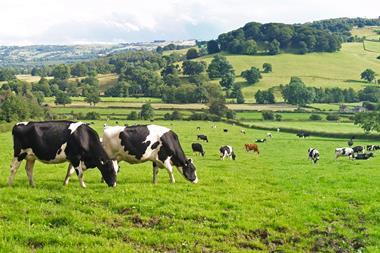
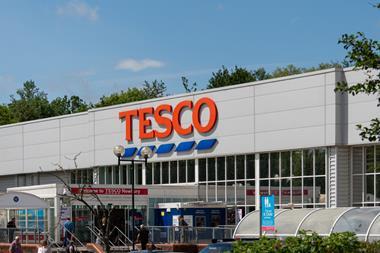

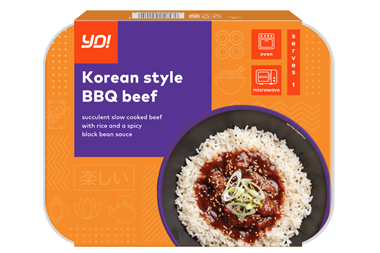
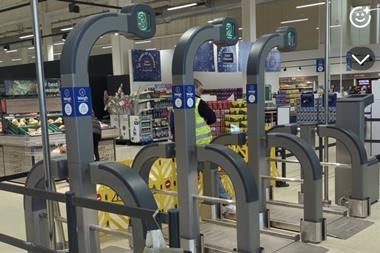
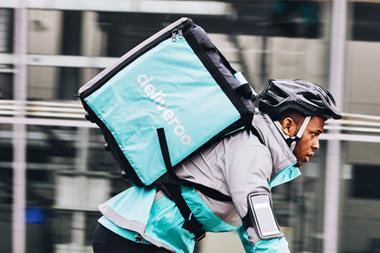





No comments yet